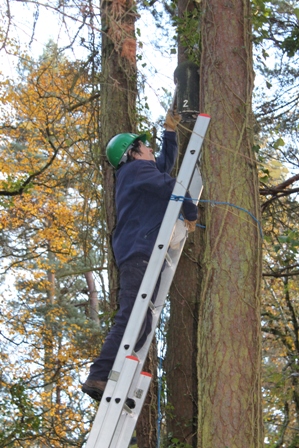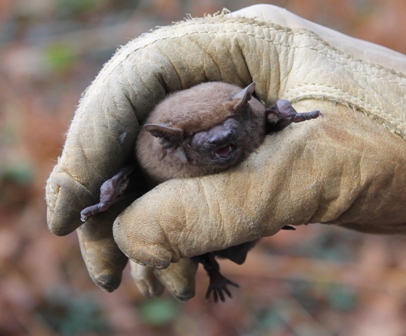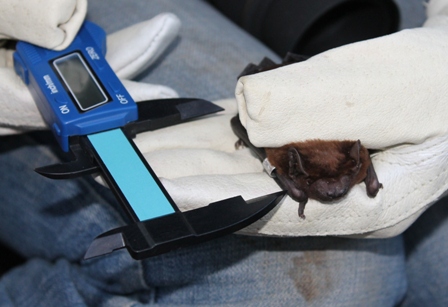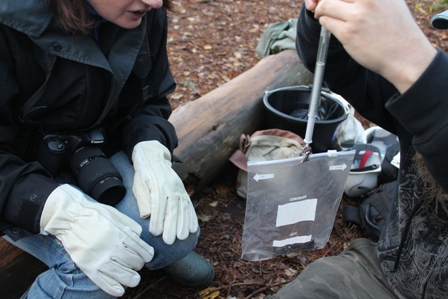
Jan Freeborn inspecting bat box, Avon Heath Country Park, Dorset, 10/11/12 (Dominic Couzens)
Saturday 10th November
It’s November, the summer is long gone and the nights are getting colder. Surely bats are the last mammals you would expect to see right now? Well, actually no. Those who study these animals are still hard at work, checking out winter roosts.
Today, the kids and I joined Jan Freeborn of the Dorset Bat Group on a check of boxes near Hurn (Bournemouth International) Airport and at Avon Heath, near Ringwood. Bats gleefully take up residence in such boxes, although they frequently shift roosts and their appearances are unpredictable. When we had checked the first few boxes at Hurn, by climbing up a ladder, loosening the front of each box and peering inside, no bats were inside and it looked as though our efforts may be in vain. The second-to-last box, however, did turn up trumps

Noctule, Hurn Airport, Dorset, 10/11/12 (Dominic Couzens)
by playing host to a decidely irascible Noctule, our largest bat. This individual, a female, registered its disapproval over being handled by uttering piercing squeals that all of us could easily hear; of course when it is searching for food by echolocation, the sounds it makes are inaudible.
Jan went over the various identification features of our bat – e.g. large size, ear folds almost down to mouth – and then proceeded to measure the bat’s vital statistics, so presumably the sounds being uttered went from irritable to incandescent. Jan concluded, by examination of clear areas around the nipples, that this individual has succeeded in breeding this year – good news.

Noctule being measured, Avon Heath Country Park, Dorset, 10/11/12 (Dominic Couzens)
Lo and behold, at Avon Heath in the afternoon, the boxes held two more Noctules, and once again we witnessed the animals being processed. Here they are also placing metal rings on the bats’ wings, so that the workers can begin to get an idea where these animals are going in the winter. Happily, one of the bat-box Noctules at Avon Heath already had a ring on, so we know that it has remained in the area.

Noctule being weighed, Avon Heath, Dorset, 10/11/12 (Dominic Couzens)
